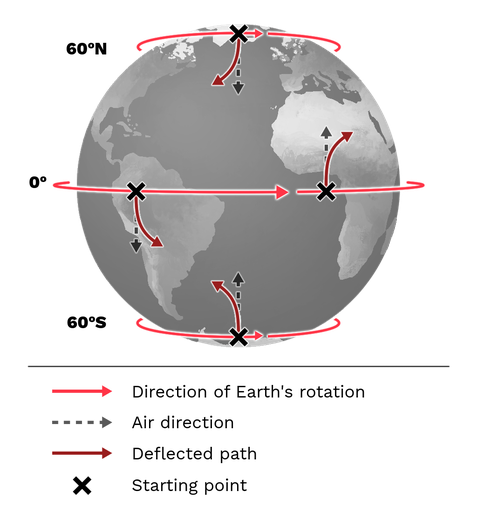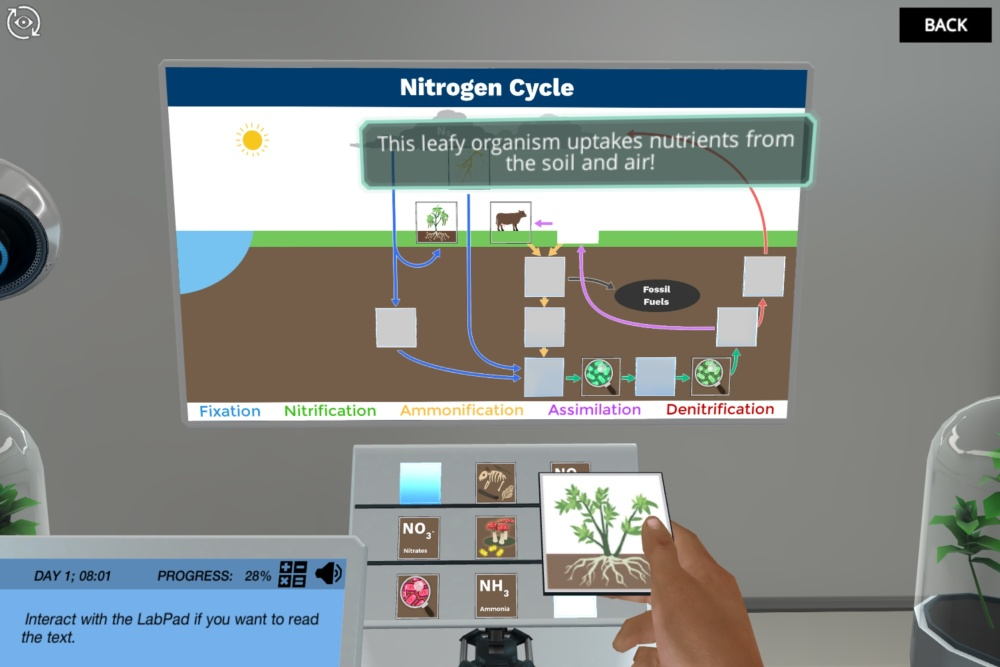
If you’re teaching a course in earth science, perhaps you’re looking for resources to help you introduce or reinforce fundamental earth science concepts that every student should know.
There are many concepts, but we’ve identified 6 common ones. We’ve also identified 6 Labster virtual labs that help you teach each concept. Not only can your students learn the concepts, but they can also have fun along the way!
Water is fundamental to every living being on Earth. Up to 70% of the human body is made up of water, which is the medium in which the chemical reactions necessary to sustain life occur. The water cycle also referred to as the hydrological cycle, is made up of different processes which move water around the Earth. A finite amount of water is found in different hydrological stores above and below the Earth’s surface. Processes such as precipitation, groundwater flow, infiltration, and condensation transport water from one store to another.

In Labster’s simulation, Human Impacts on the Water Cycle, students will learn how water moves around the Earth in a continuous cycle. They’ll also examine how human activities, such as deforestation and urban development, can impact different hydrological processes.
According to National Geographic, “Earth’s atmosphere is composed of about 78 percent nitrogen, 21 percent oxygen, 0.9 percent argon, and 0.1 percent other gases. Trace amounts of carbon dioxide, methane, water vapor, and neon are some of the other gases that make up the remaining 0.1 percent.”
In Labster’s simulation, Earth’s Atmosphere, students will learn about the Earth’s atmospheric composition, how it has changed over the last 4.6 billion years, and its importance for sustaining life.

According to National Geographic, the Coriolis effect is responsible for many large-scale weather patterns. It’s a major component in explaining why winds in areas of high-pressure blow westward and low-pressure areas blow eastward in the northern hemisphere and vice versa in the southern hemisphere.

In Labster’s virtual lab, Atmospheric Circulation, Climate, and Biomes, students will match prevailing winds to their corresponding cells and understand how the Coriolis effect influences their direction.
We’ve all heard of greenhouse gases with the increasing issues facing our climate. Greenhouse gases are present in the atmosphere. They absorb and re-emit the sun's radiation, warming up the Earth. Human influence can lead to global warming through large-scale greenhouse gas emissions. A considerable fraction of the Sun's energy that reaches Earth is not reflected back into space, but is absorbed by greenhouse gases and thus warms the atmosphere.
In Labster’s simulation, Human Impact on Climate Change, students will learn the meaning of anthropogenic climate change and explore the causes and effects through a 3D climate model. What will happen if we do not decrease greenhouse emissions?

Carbon is fundamental to life and the main component of macromolecules, such as carbohydrates, proteins, lipids, and nucleic acids. These are the building blocks of life and make up all living things. The Earth contains a finite amount of carbon, which is cycled through different reservoirs, such as the atmosphere, the ocean, living organisms, and fossil fuels. The carbon cycle is key to many life processes, such as photosynthesis and cellular respiration.

In Labster’s simulation, Explore the Carbon Cycle, students will learn all about the carbon cycle to help Farmer Greg understand the reason behind his corn shortage. He has been informed that it could be due to the effects of global warming from carbon emissions. They’ll learn about the importance of the carbon cycle and the negative impact of human emissions on the environment so they can help Farmer Greg with his problem.
The nitrogen cycle is a biogeochemical cycle which is fundamental to many life processes. The atmosphere consists of 78% nitrogen in the form of nitrogen gas (N2). Nitrogen gas is fixed by bacteria in the soil and lightning into more reactive nitrogen compounds, such as ammonia nitrates, which plants can use. The cycle follows five main processes: fixation, nitrification, assimilation, ammonification, and denitrification, which convert reactive compounds back into nitrogen gas.
In Labster’s simulation, The Nitrogen Cycle, students will learn about the nitrogen cycle and help restaurant owner Alex understand why food suppliers cannot simply increase food production without considering its broader impacts on the nitrogen cycle.

In summary, here are the 6 earth science concepts and their accompanying virtual labs:
Each of these labs can help your students better grasp the concepts in earth science.

Labster helps universities and high schools enhance student success in STEM.
Request DemoRequest a demo to discover how Labster helps high schools and universities enhance student success.
Request Demo